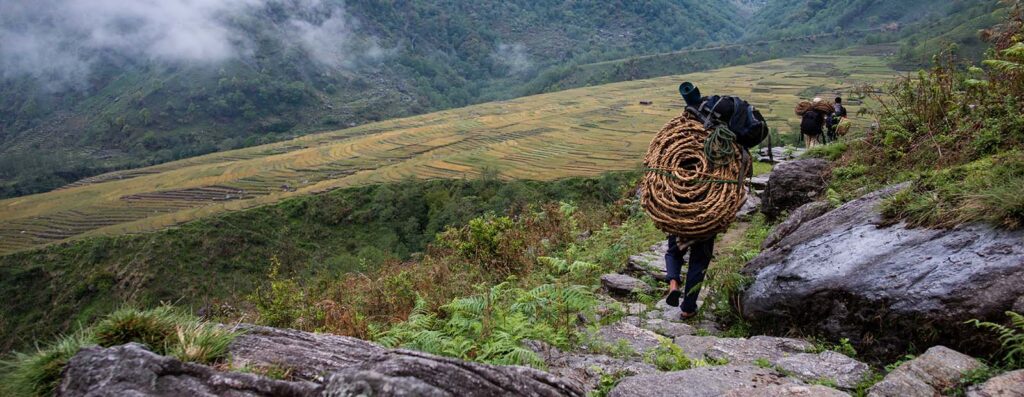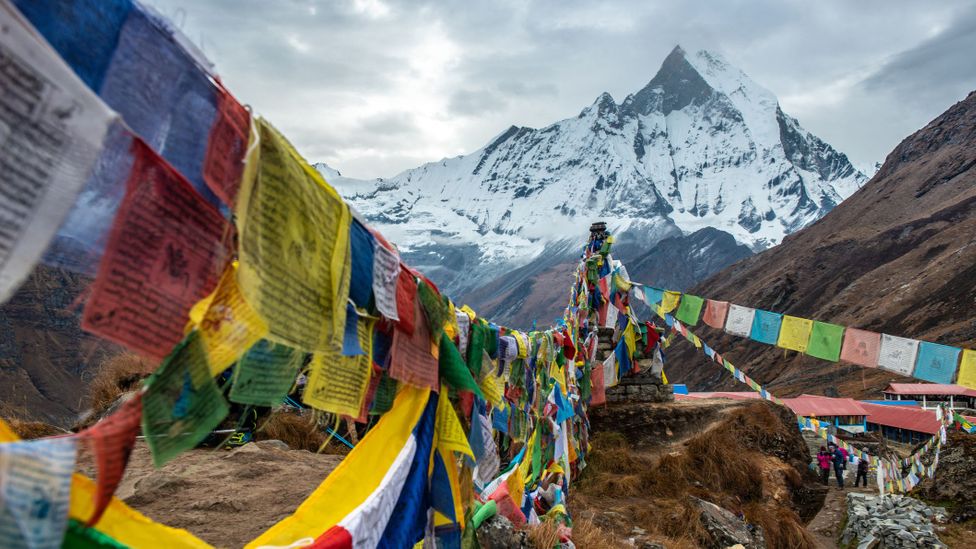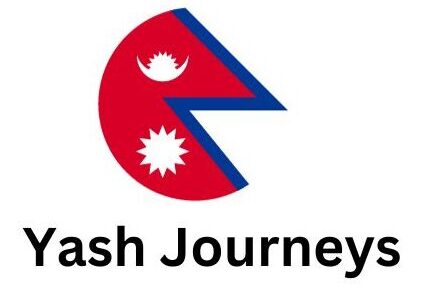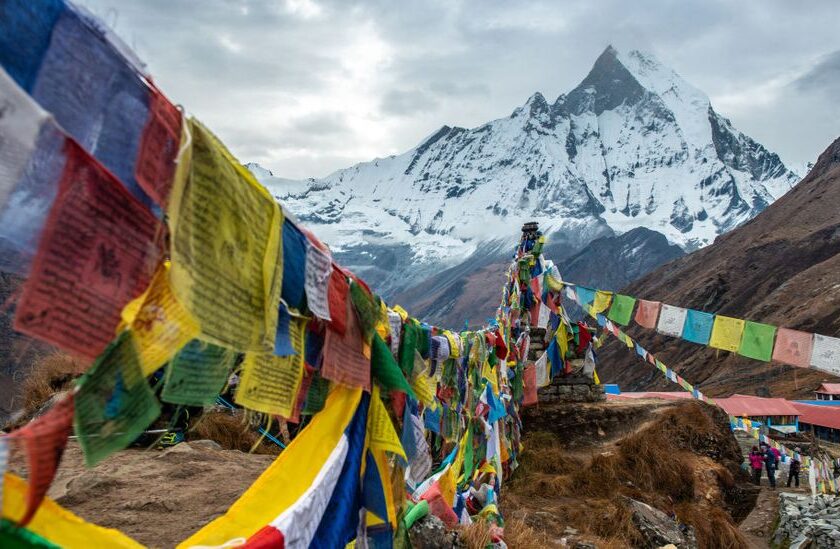Have you ever wondered about the rich history and ancient roots of Nepal? In this article, we will take you on a fascinating journey to explore the age of Nepal and discover the hidden stories of its past. From its majestic temples and palaces to the deep traditions and cultural heritage, Nepal holds a captivating past that continues to shape its present. Buckle up and get ready to uncover the secrets of this enchanting land.
Ancient History
Nepal, a landlocked country in South Asia, boasts a rich and vibrant ancient history that has shaped its culture and society for centuries. From the prehistoric period to the present day, Nepal has witnessed various dynasties, rulers, and significant events that have left an indelible mark on its identity.
Prehistoric Period
The prehistoric period of Nepal, which dates back thousands of years, is characterized by the presence of early human settlements. Archaeological excavations have unearthed stone tools, pottery, and cave paintings, providing evidence of a hunter-gatherer society that inhabited the region. These early inhabitants laid the foundation for the complex civilization that would emerge in later centuries.
Indo-Aryan Infiltration
During the ancient period, Nepal witnessed the arrival of the Indo-Aryans, a group of people who migrated from the Indian subcontinent. This influx of Indo-Aryans brought with them their language, culture, and religious beliefs, which heavily influenced the societal fabric of Nepal. The blending of indigenous traditions with Indo-Aryan customs laid the groundwork for the diverse cultural heritage that defines Nepal today.
Kirati Rule
The Kirati dynasty, which ruled Nepal from around 300 BCE to 600 CE, marked a significant epoch in the country’s ancient history. The Kirati rulers, believed to be of Mongoloid and Tibeto-Burman descent, established a prosperous and powerful kingdom in the Himalayan region. Under their rule, agriculture and trade flourished, and a distinct Kirati culture emerged. The Kirati dynasty laid the foundation for subsequent dynasties and played a crucial role in shaping Nepal’s identity.
Licchavi Dynasty
The Licchavi dynasty, which reigned from the 4th to the 9th century CE, is considered one of the most significant periods in Nepal’s ancient history. The Licchavi rulers were known for their patronage of the arts, including sculpture, literature, and architecture. They introduced the first organized system of government in Nepal and contributed to the spread of Buddhism throughout the region. The Licchavi period was marked by economic prosperity and cultural development, leaving a lasting legacy in the annals of Nepalese history.
Thakuri Dynasty
The Thakuri dynasty, which followed the Licchavis, ruled Nepal from the 9th to the 12th century CE. The Thakuri rulers consolidated their power over various regions of Nepal and made significant contributions to the development of the country. They bolstered trade, established diplomatic relations with neighboring kingdoms, and promoted the spread of Hinduism. The Thakuri dynasty laid the groundwork for the future dynasties, setting the stage for the medieval period in Nepal’s history.

Medieval Period
The medieval period in Nepal witnessed the rise and fall of several dynasties that shaped the socio-political landscape of the country. This era saw the unification of Nepal under the leadership of Prithvi Narayan Shah, the establishment of the Shah dynasty, and the subsequent dominance of the Rana dynasty.
Malla Dynasty
The Malla dynasty, which reigned from the 12th to the 18th century CE, was a pivotal era in Nepal’s medieval history. The Malla rulers were renowned for their patronage of the arts, especially in the Kathmandu Valley, which became a hub of cultural and artistic activities. Intricate woodcarvings, stone sculptures, and stunning architecture adorned the temples and palaces built during this period. The Malla dynasty also witnessed the rise of Newar art and architecture, which became synonymous with the cultural identity of Nepal.
Unification by Prithvi Narayan Shah
In the late 18th century, Nepal underwent a significant transformation under the visionary leadership of Prithvi Narayan Shah. He successfully unified various small kingdoms and principalities to establish a strong and sovereign nation-state. The unification process, known as the Gorkha conquest, marked a turning point in Nepal’s history, laying the foundation for a unified Nepali identity and culture.
Shah Dynasty
Following the unification, Prithvi Narayan Shah established the Shah dynasty, which lasted from the late 18th century to the mid-20th century. The Shah kings played a vital role in consolidating Nepal’s territorial integrity and modernizing the country. They encouraged trade, improved administrative systems, and introduced new legal codes. However, later generations of the Shah dynasty faced challenges in maintaining political stability, culminating in the rise of the Rana dynasty.
Rana Dynasty
The Rana dynasty, which spanned from the mid-19th century to the mid-20th century, was characterized by the dominance of the Rana family over the Shah kings. The Rana rulers held immense power and controlled the political affairs of Nepal, with the Shah kings reduced to figureheads. Although the Rana period witnessed a degree of modernization, it was marred by autocratic rule and widespread socio-economic disparities.

Modern Era
The modern era in Nepal has been shaped by significant political, social, and cultural transformations that have paved the way for the country’s current democratic setup.
Democratization and Democracy
In the mid-20th century, Nepal witnessed a growing demand for democracy and an end to the autocratic rule of the Rana dynasty. A popular movement led by various political parties and activists culminated in the end of Rana rule and the establishment of a democratic system in 1951. However, the path to stable democracy was not without its challenges, as Nepal grappled with political instability and frequent changes in government over the years.
Political Developments
Following the establishment of democracy, Nepal experienced various political developments that shaped its governance system. The country experimented with different models, including a multiparty system, a parliamentary monarchy, and constitutional reforms. These political changes aimed to decentralize power and create a more inclusive and representative government for the Nepali people.
Monarchy Abolition
One of the landmark events in Nepal’s modern history was the abolition of the monarchy in 2008. After a decade-long civil war and a mass movement for democracy, Nepal made the historic decision to become a republic. The monarchy, which had been a central pillar of governance for centuries, was replaced by a federal democratic republic, heralding a new chapter in Nepal’s political landscape.
Federal Democratic Republic
The establishment of a federal democratic republic in Nepal marked a significant step towards decentralization and inclusive governance. The country adopted a federal structure, devolving power to provincial and local levels, aiming to address the grievances of marginalized communities and promote greater regional autonomy. The transition to a federal system, although challenging, holds the promise of a more equitable and participatory political scenario for Nepal.
Religion and Culture
Nepal is a melting pot of diverse religious beliefs and cultural practices, with Hinduism, Buddhism, Kiratism, and animism being the major religions followed by its people.
Hinduism
Hinduism has been a dominant religion in Nepal for centuries and has deeply influenced the country’s religious and cultural landscape. The majority of Nepalis follow Hinduism, with shrines, temples, and religious rituals being an integral part of everyday life. The Pashupatinath Temple in Kathmandu and the Muktinath Temple in Mustang are among the holiest Hindu pilgrimage sites, attracting devotees from all over the world.
Buddhism
Buddhism holds a significant place in Nepal’s religious fabric, with the birthplace of Gautama Buddha, Lumbini, located within its borders. Nepal is home to numerous Buddhist monasteries, stupas, and pilgrimage sites that attract followers and spiritual seekers from around the globe. The iconic Boudhanath Stupa in Kathmandu and the sacred site of Swayambhunath are among the revered Buddhist landmarks in Nepal.
Kiratism
Kiratism is an indigenous religion that has its roots in the Kirat dynasty of ancient Nepal. It encompasses various shamanistic and animistic practices, with a focus on nature worship and ancestral spirits. While the influence of Kiratism has diminished over the centuries, it continues to be an integral part of the cultural heritage of certain ethnic communities in Nepal, particularly among the Kirati people.
Animism
Animism, a belief system centered around the worship of natural objects and spirits, has deep roots in Nepal’s indigenous communities. Many ethnic groups in Nepal, such as the Rai, Limbu, and Magar, adhere to animistic traditions alongside other religious practices. These beliefs reflect a profound connection with the natural world and an understanding of the interdependence between humans and their environment.
Religious Festivals
Nepal is known for its vibrant religious festivals that showcase the country’s cultural diversity and religious fervor. Festivals like Dashain, Tihar, and Holi are celebrated with great enthusiasm and are an occasion for family gatherings, feasts, and religious rituals. These festivals bring communities together, fostering a sense of unity and reinforcing the rich religious heritage of Nepal.
Geographical Influences
Nepal’s geography has played a crucial role in shaping its history, culture, and way of life. The country can be divided into three distinct geographical regions: the Himalayan region, the Terai region, and the hilly region.
Himalayan Region
The Himalayas, with towering peaks like Mount Everest and Kanchenjunga, are a defining feature of Nepal’s landscape. The majestic mountains have not only captivated adventurers and mountaineers but have also influenced the culture, religion, and livelihoods of the people living in the region. The Himalayas are considered sacred, and many religious pilgrimages and spiritual retreats are centered around these lofty peaks.
Terai Region
The Terai region, located in the southern part of Nepal, is a fertile plain that stretches along the border with India. This region experiences a subtropical climate and is known for its lush agriculture and rich biodiversity. The Terai has historically served as a gateway for trade and cultural exchange with the Indian subcontinent, influencing the traditions and customs of the people residing in this region.
Natural Disasters
Nepal’s geographical location makes it susceptible to various natural disasters, including earthquakes, landslides, and floods. The devastating earthquakes in 1934 and 2015 left profound impacts on the country, resulting in loss of life, destruction of infrastructure, and displacement of communities. Nepal’s vulnerability to natural disasters requires ongoing efforts to mitigate risks, enhance preparedness, and promote sustainable development.
Economic Development
Nepal’s economic development has been driven by sectors such as agriculture, tourism, hydropower, and remittances from foreign employment.
Agriculture
Agriculture forms the backbone of Nepal’s economy, employing a significant portion of the population. The fertile lands of the Terai and the hills allow for the cultivation of crops such as rice, wheat, maize, and millet. Traditional farming practices, combined with emerging technologies, contribute to the country’s food security and rural livelihoods. However, agricultural productivity and infrastructure development remain key challenges as Nepal seeks to modernize its agricultural sector.
Tourism
Nepal’s stunning landscapes, rich cultural heritage, and adventure opportunities make it a prime destination for tourists. The country attracts millions of visitors each year, who come to explore the lofty Himalayas, trek through scenic trails, and immerse themselves in the vibrant cultural tapestry of the Kathmandu Valley. Tourism contributes significantly to Nepal’s economy, generating employment and foreign exchange earnings.
Hydropower
Nepal’s vast network of rivers and abundant water resources provide immense potential for hydropower generation. The country is rich in hydrological resources, making it a suitable candidate for harnessing clean and renewable energy. Investments in hydropower projects, both domestically and through international collaborations, aim to meet the growing energy demands of Nepal and promote sustainable development.
Remittances
Remittances from Nepali workers employed abroad have been a crucial source of income for many households. Nepalis, particularly in rural areas, seek employment opportunities in countries like India, Malaysia, the Gulf nations, and the United States. The money sent back home by these migrant workers supports local economies, improves living standards, and contributes to Nepal’s overall economic growth.
Political Scenario
Nepal’s political journey has witnessed several significant events that have shaped its political landscape, including democratic movements, civil war, Maoist insurgency, and a peace process.
First Democratic Movement
The first democratic movement in Nepal took place in 1951, culminating in the overthrow of the autocratic Rana dynasty and the establishment of a democratic system. Through mass protests and political activism, the Nepali people demanded an end to the autocratic rule and fought for the right to self-governance.
Civil War
From 1996 to 2006, Nepal was engulfed in a brutal civil war between the government and the Communist Party of Nepal (Maoist). The conflict, marked by violence and political unrest, resulted in the loss of thousands of lives and widespread displacement. The civil war brought significant socio-political changes and led to the abolition of the monarchy.
Maoist Insurgency
The Maoist insurgency was a significant political movement in Nepal that sought to establish a communist republic in the country. The Communist Party of Nepal (Maoist) launched an armed rebellion against the government, with the aim of overthrowing the monarchy and addressing socio-economic disparities. The insurgency ended with a comprehensive peace agreement in 2006, paving the way for a new era of political stability and transformation.
Peace Process
Following the end of the civil war and the Maoist insurgency, Nepal embarked on a comprehensive peace process aimed at addressing the root causes of the conflict and promoting national reconciliation. The peace process included disarmament of the Maoist combatants, integration and rehabilitation efforts, and constitutional reforms to ensure a more inclusive and democratic system. The peace process marked a significant milestone in Nepal’s political scenario, fostering hopes for lasting peace and stability.
Education and Literacy
Education and literacy play a crucial role in Nepal’s social and economic development, although the country faces various challenges in this sector.
Early Education
Nepal recognizes the importance of early childhood education and has made efforts to prioritize and expand access to quality pre-primary education. Early education programs aim to provide a strong foundation for children’s learning and development, equipping them with the necessary skills for future academic success.
Nepal Education System
The education system in Nepal follows a structured framework that includes primary, lower secondary, secondary, and higher secondary levels. The government has made significant investments in improving access to education, promoting inclusivity, and enhancing the quality of teaching and learning. However, challenges such as limited resources, lack of infrastructure, and regional disparities pose obstacles to achieving universal education for all Nepali children.
Literacy Rate
Nepal has made notable progress in improving its literacy rate over the years. According to the latest data, the overall literacy rate in the country stands at around 71%. However, there are disparities between genders and geographic regions, with rural areas and marginalized communities often experiencing lower literacy rates. Efforts are underway to bridge these gaps and ensure equal access to education for all Nepali citizens.
Challenges in Education Sector
The education sector in Nepal faces various challenges that hinder its progress. Insufficient funding, lack of qualified teachers, inadequate infrastructure, and the need for curriculum reforms are some of the key issues that need to be addressed. Additionally, Nepal’s difficult terrain and remote locations make it challenging to provide quality education to rural and marginalized communities. Ongoing efforts to overcome these challenges are essential for achieving a well-rounded and inclusive education system.
Healthcare and Social Development
Nepal has made significant strides in improving healthcare and social development indicators, although there is still much work to be done to ensure access to quality healthcare and promote social well-being.
Healthcare System
Nepal’s healthcare system comprises government-run hospitals, health centers, and private healthcare facilities. The government has taken steps to improve healthcare infrastructure, increase the availability of essential medicines, and enhance the quality of healthcare services. However, challenges such as limited healthcare professionals, inadequate funding, and disparities between rural and urban areas persist. Efforts are ongoing to strengthen the healthcare system and ensure equitable access to healthcare for all Nepali citizens.
Maternal and Child Health
Improving maternal and child health has been a key priority for the Nepali government and development partners. Efforts to reduce maternal and child mortality rates, increase access to prenatal and postnatal care, and promote family planning services have yielded positive results. However, gaps in healthcare access, inadequate nutrition, and socio-cultural factors continue to pose challenges to improving maternal and child health outcomes.
Social Development Initiatives
Nepal has implemented various social development initiatives aimed at promoting gender equality, empowering marginalized communities, and addressing social inequalities. Programs targeting women’s empowerment, poverty alleviation, rural development, and social inclusion have been critical in addressing the socio-economic disparities prevalent in the country. These initiatives aim to create a more equitable and just society for all Nepali citizens.
Art and Architecture
Nepal’s art and architecture reflect the country’s historical and cultural heritage, with distinct artistic styles and architectural marvels found throughout the nation.
Newar Art and Architecture
Newar art and architecture, predominantly found in the Kathmandu Valley, showcase exquisite craftsmanship and intricate detailing. Traditional Newar architecture is characterized by ornate wooden carvings, pagoda-style temples, and palaces adorned with intricate brickwork. Meticulously crafted sculptures, metalwork, and paintings highlight the artistic excellence of the Newar community and their contributions to the cultural landscape of Nepal.
Malla Architecture
The Malla period witnessed a flourishing of art and architecture in Nepal, with the rulers of the Malla dynasty patronizing the construction of palaces, temples, and public spaces. Malla architecture exhibits a blend of indigenous Newar style with influences from Indian, Tibetan, and other regional architectural traditions. The architectural marvels of this period, such as the Pashupatinath Temple, Boudhanath Stupa, and Bhaktapur Durbar Square, continue to enchant visitors with their grandeur and historical significance.
Gorkha Art and Architecture
The Gorkha period marked a departure from the elaborate architectural styles of the Malla dynasty. Gorkha art and architecture emphasized simplicity, functionality, and defensive features. The Gorkha Palace, perched on a hilltop, is a prime example of Gorkhali architecture, showcasing the strategic importance of fortifications during this period. The Gorkhali style has its distinct charm and reflects the architectural evolution of Nepal during different historical periods.
In conclusion, Nepal’s ancient history, medieval period, and modern era have shaped the country into what it is today. From the prehistoric settlements to the establishment of democratic governance, Nepal’s journey has been marked by significant events, cultural diversity, and geographical influences. With a rich tapestry of religions, diverse geography, and ongoing efforts in education, healthcare, and social development, Nepal continues to build on its past while striving for a more prosperous and inclusive future.

